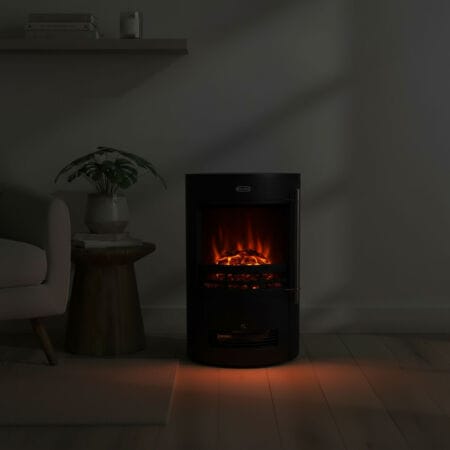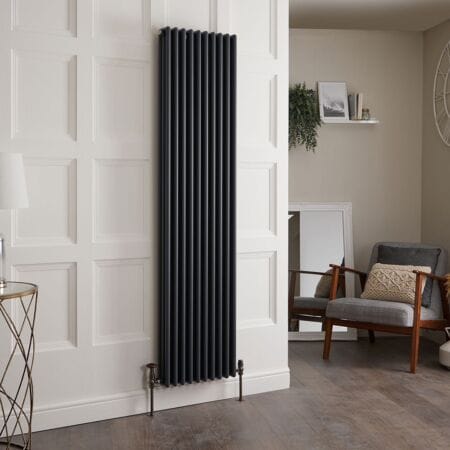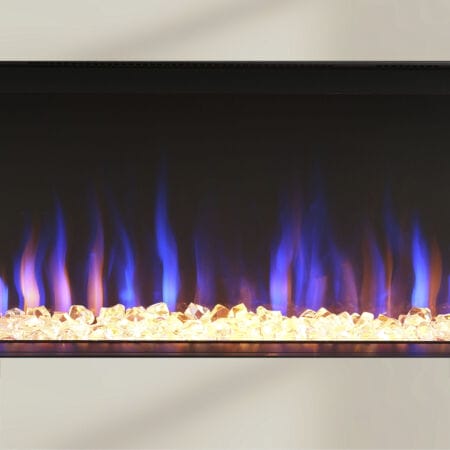Contents
ToggleWhat we'll cover...
In this helpful guide, we’ll delve into all the key aspects that determine what boiler size you need for your home. This includes what kW boiler output means, why choosing the right size matters, and how to avoid the pitfalls of going too big or too small with your boiler.
How to find the right size boiler
In shopping for a new boiler, one of the first and most integral questions to ask is what size boiler do I need? And by that, we don’t necessarily mean whether the unit will fit into your cupboard space. Whilst the physical size of the unit is of course important, we’re talking about boiler size as it pertains to heating output in kilowatts (kW). Basically, how much energy the boiler can provide to keep your radiators warm and your hot water flowing.
Choose wrong, and you’ll either end up with a system that guzzles gas and drains your wallet in energy bills, or one that wheezes along and leaves you shivering in the shower.
This guide will look at the key elements of correct boiler sizing, including:
- What kW ratings mean
- The main factors that influence what size boiler is needed
- A boiler sizing calculator and chart for quick reference
- Real-life examples for typical UK homes, from a compact single-bed flat to a 4+ bedroom family house
- Answers to the most common questions homeowners ask about boiler sizing
By the end, you’ll understand exactly how to work out the right boiler size for your home, and when to call in an expert for tailored advice.

What is boiler sizing and why is it important?
Boiler sizing refers to the heat output capacity of a boiler, measured in kilowatts (kW). Think of it like the horsepower of your heating system.
- A higher kW boiler = more power to heat a large home or multiple bathrooms.
- A lower kW boiler = just enough juice to keep a smaller property cosy without wasting energy.
Why does boiler sizing matter?
Choosing an oversized boiler will waste fuel and drive up your energy bills. This can lead your heating system to short cycle (switch on and off too often), putting unnecessary strain on components.
Choosing an undersized boiler can lead to endless complaints about cold showers, designer radiators that never heat up to their full potential, and a boiler that’s constantly under stress.
So is it better to undersize or oversize a boiler?
Neither. As both undersizing and oversizing a boiler will have a negative overall effect on your heating system, it is imperative to find the correct size suited to your needs. A boiler that’s “just right” for your home will help to keep things reliable, efficient, and cost-effective.
Related read: Heating the house vs heating the room: Best practice for lower energy bills

Factors to choose the right boiler size for your home
Finding the correct boiler output for your home depends on heating demand. Here are the main things to consider when making that calculation:
Property type and size
- Flats and small terraced houses typically lose less heat and therefore require lower output boilers (18-24kW).
- Semi-detached houses with a decent level of insulation usually suit a 24-30kW boiler.
- Large detached homes with more than one bathroom and 15+ total radiators often need 30-42kW, or even a system boiler in some instances.
“A well-insulated 3-bed semi-detached house could run perfectly via a 28kW boiler, but a draughty Victorian terrace property of the same size might need 35kW or more” – Jess Steele, heating trends analyst at BestHeating.
Number of radiators
The number of radiators within a home provides a clear indicator of heating demand.
- Up to 10 radiators: 18-24kW
- 10-15 radiators: 24-30kW
- 15-20 radiators: 30-40kW
BTU output references how much heat a radiator or alternative heating device can kick out. Use our BTU Calculator to work out the exact heat output required for each radiator.
Number of bathrooms
Bathrooms are hot water hogs. For each shower you have in your home, an extra strain is placed on your boiler. Especially so if you’re using a combi boiler that heats up the water instantly.
- 1 bathroom: A combi boiler will work, typically 24-28kW.
- 2 bathrooms: A larger combi (30-35kW) or a system boiler is recommended.
- 3+ bathrooms: A system or regular boiler with a hot water cylinder is the preferred choice.
Hot water demand & lifestyle
Your boiler choice isn’t just determined by bedrooms and bathroom spaces – it’s also about home heating habits. For example, if the boiler is too small for your household scenario, hot water might run out before everyone’s had their morning shower.
- For a home with two people who shower at different times, a smaller boiler can suffice
- In a busy family household with five people taking a shower in a one-hour period, you’ll need extra boiler capacity.
Insulation quality
A well-insulated home offers much better heat retention, meaning you can get by with a smaller kW boiler. Poor home insulation? Your boiler will need to work harder and require a higher kW capacity.

Boiler sizing chart
Property Type | Bedrooms | Bathrooms | Radiators | Combi Boiler (kW) | System Boiler (kW) | Regular Boiler (kW) |
Flat / Small House | 1-2 | 1 | 6-10 | 24-27 kW | 12-15 kW | 12-15 kW |
Semi-Detached | 3 | 1-2 | 10-15 | 28-35 kW | 18-24 kW | 18-24 kW |
Large Detached | 4+ | 2+ | 15-20+ | 35-42 kW | 30+ kW | 30+ kW |
Disclaimer: This is a typical guide intended to provide a rough estimate. Always consult a Gas Safe engineer to complete a tailored assessment.
Boiler sizing recommendations, by house size
What size boiler is needed for a 1-2 bedroom house?
- A 24-27kW combi boiler is typically sufficient.
- Handles up to 10 radiators and a single bathroom area.
- Best for: flats, small terrace houses, and starter homes.
What size boiler is needed for a 3-bedroom house?
- A 28-35kW combi boiler is a common choice for 3-bed semi-detached properties.
- Suits 10-15 radiators and up to two bathrooms.
- Best for: families with higher hot water usage levels may benefit from a system boiler.
Related read: New boiler, new radiators? The pros & cons of updating your whole heating system
What size boiler is needed for a 4+ bedroom house?
- For 15-20+ radiators and two to three bathrooms, a 35-42kW boiler is a standard option.
- In many circumstances, a system or regular boiler that incorporates a hot water cylinder is more reliable than a combi boiler.
- Best for: busy families, large properties, and multiple en-suite spaces.

Common boiler sizing questions answered
- How do I calculate what size boiler I need?
Count how many radiators are in the home, and the number of bathrooms, and factor in property size. Use the chart featured earlier in this article and our BTU Calculator as a guide.
- How many radiators can a 30kW boiler run?
A 30kW boiler can account for around 15 radiators in a well-insulated home.
- Do I need a 30kW or 35kW boiler?
Which size boiler you need will depend on hot water demand. 35kW is better for homes with two or more bathrooms.
- Is a 24kW boiler big enough for a 3-bedroom house?
It is possible that a 24kW boiler can accommodate a 3-bedroom house, but only in the instance that there’s a single bathroom and 10 or fewer radiators.
Find the right boiler size with BestHeating
Boiler sizing isn’t a simple one-size-fits-all job, but hopefully, this guide has given you a clear starting point to find your correct boiler size.
If you’re still not certain what size boiler you need, there are lots of resources to help in the BestHeating Advice Centre. Whether you’re replacing an old combi, moving into a new home, or upgrading your entire heating system, we’ll make sure you can find the right fit for comfort, efficiency, and cost savings.
Let us know about how you find the right boiler size in the comments below, or by reaching out to us on Instagram, Facebook or X.
John is a Research Specialist for the Best Heating Advice Centre, where for over nine years he has dedicated himself to demystifying home heating for our customers. He specialises in creating clear, data-driven guides and how-to articles by collaborating directly with our team of certified heating experts and product engineers.
His work, built on a foundation of journalistic research, has helped millions of readers make confident and informed decisions about their home heating. When he’s not breaking down the heat output differentials from radiators to heated towel rails, John fancies himself as a fine football and music connoisseur.




